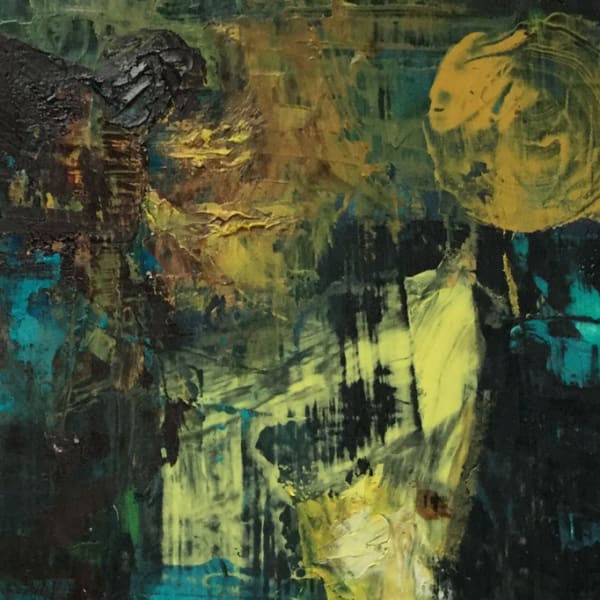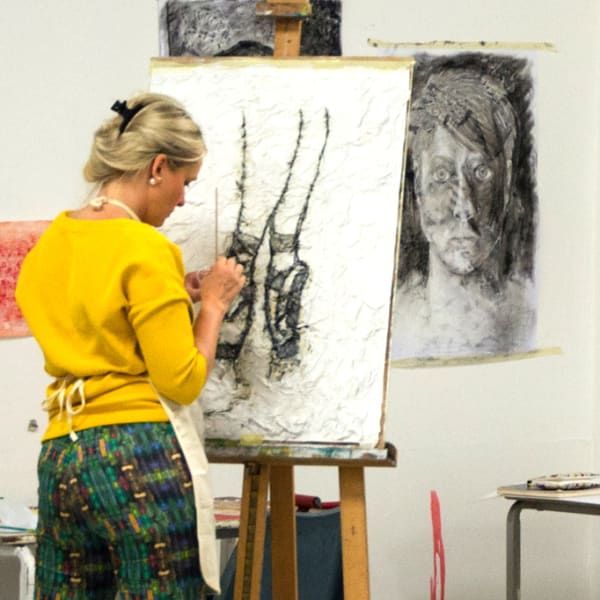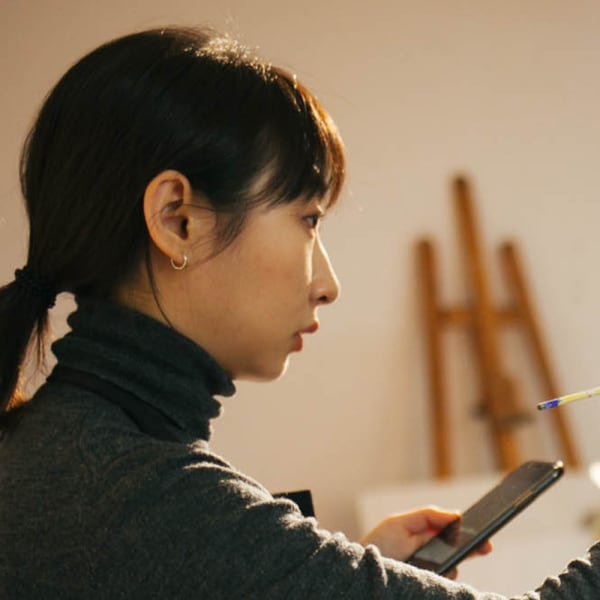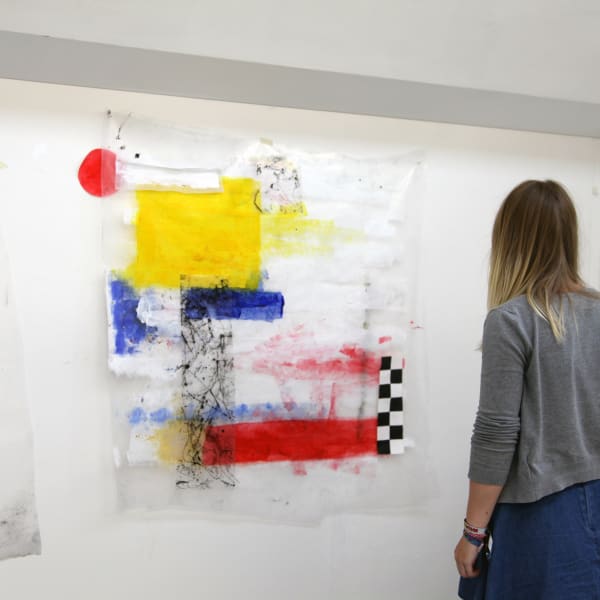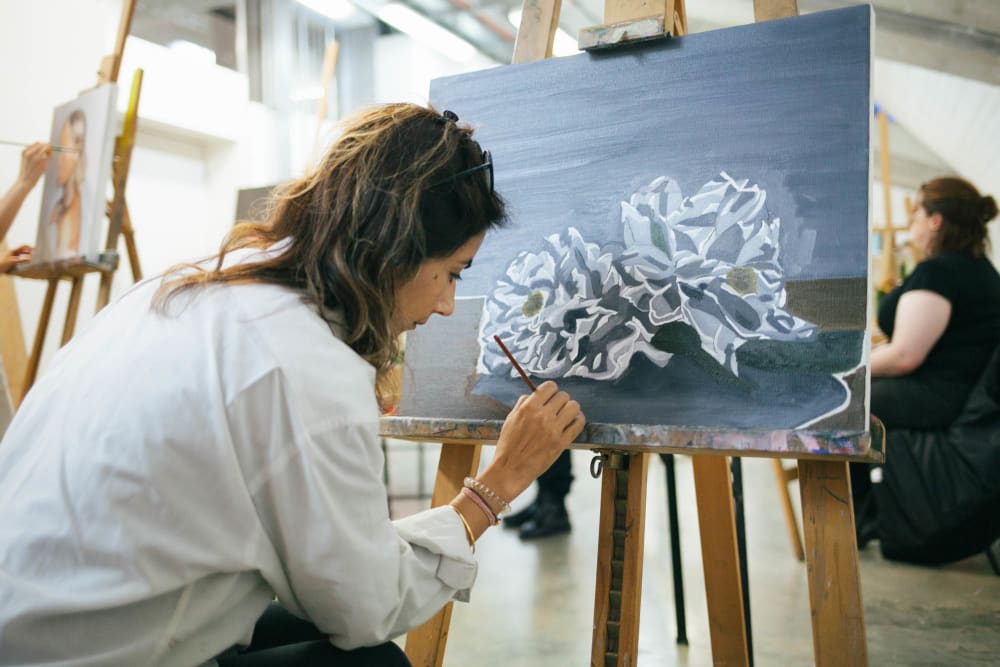
10 essential painting techniques for artists
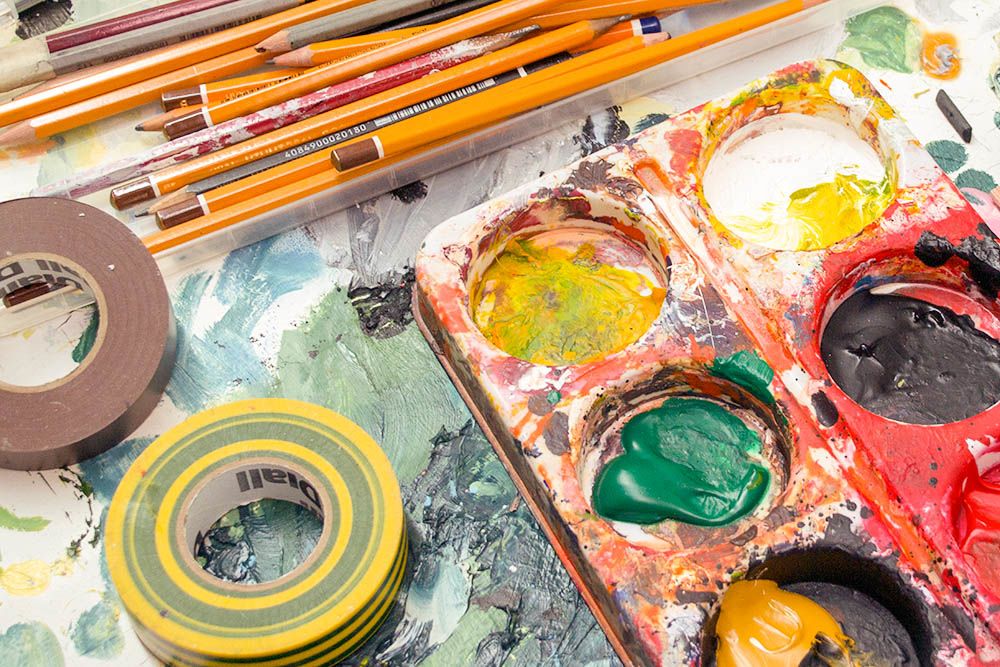
- Written byCarys Thomas
- Published date 09 December 2021

If you’re looking to improve your painting skills, it is useful to have an understanding of some fundamental painting techniques that will allow you to experiment with different styles and find your voice as an artist.
Whether you’re interested in working with oil, acrylic or watercolour, there are several painting techniques that can enhance your practice and help you paint with confidence.
Having some knowledge of different painting techniques will also help you understand and interpret art by exploring how an artist achieved a particular effect or finish.
If you’re interested in finding out more about how to interpret art, take a look at our guide on where to begin with interpreting art for some advice on how to get started.
We’ve compiled this guide to give you an overview of 10 essential painting techniques to try that should help you develop your painting skills regardless of your level of knowledge or experience.
Getting started
When it comes to improving your painting skills, it is important to experiment with different styles and techniques and forget about the ‘rules.’ "Across history, painters looking to improve their techniques have done so by twisting the rules and expectations established by previous generations," says Theo Carnegy-Tan, Arts Academic and UAL short course tutor, "this might mean using extreme impasto, or vigorous, gestural strokes as the Expressionists and Impressionists did in the early 20th Century."
If you’re finding the all the possibilities and techniques a little overwhelming, remember, as Theo, who leads our Understanding Contemporary Art short course, notes, "you don’t need to follow conventional techniques at all, even in an amplified form. John Baldessari famously hired someone else to make a painting entirely of text phrases for him, all of which were drawn from practical textbooks. This kind of approach opened up boundaries for painters of all kinds who abandoned form, gesture, and colour altogether in the post-war period."
1# Underpainting
The term ‘underpainting’ refers to the first layer of paint that is applied to a canvas or board. This layer or coating functions as a base for other layers of paint and can create a sense of contrast and tone in a painting. This is a simple technique that can have a big effect on the overall feel of a painting, allowing an artist to brighten areas that could otherwise appear flat and uniform, such as an area of sky or sea. Artists may choose to play with the tone of an underpainting to bring out certain colours and draw attention to specific elements like light or shadow.
2# Dry brushing
Artists will occasionally use a paintbrush that is mostly dry to the touch but still holds paint to produce art using a technique known as dry brushing. When following this technique, brushstrokes will appear to have a more textured, scratchy finish that is difficult to achieve using a wet brush or when working with a large amount of paint. Dry brushing can be an effective way to capture the texture of the natural world, from clouds to trees and hedgerows.
There are many intricate examples of this painting technique in ancient Chinese art. A brush would be dipped into black or coloured ink and used to create a softer, lighter effect which was often deeply atmospheric.
3# Sgraffito
The term ‘sgraffito’ comes from the Italian for ‘scratched’ and refers to a technique used in painting that involves scratching through a layer of paint to expose what remains underneath. By covering a preliminary surface with another layer, artists can effectively scratch off the superficial layer in a way that will expose unique patterns or shapes.
It is possible to use any object that will allow you to scratch a line into the paint. You could try using the pointed end of a paintbrush, for example, or you might want to experiment with a piece of card, palette knife, comb or fork to practice your mark-making.
4# Glazing
Glazing is a technique used to draw out the luminosity of a painting by applying a thin transparent or semi-transparent layer of paint onto a painting. A wide, soft-bristled brush is often used in what can be quite a complicated glazing process. You can alter the tone of your glaze by adapting the amount of pigment you use, and you may also decide to build up layers of glaze to produce a darker effect. If it’s done well, glazing can help to unify the contrast between colours to establish a subtle balance between colour and tone.
Many artists used glazing during the Renaissance as a way of mixing paints. A thin layer of paint would be applied over the main colour which would alter the colour beneath and produce many soft and saturated tones.
5# Gestural
Gestural painting refers to a technique in which paint is applied in free, sweeping gestures. Artists that choose to work in this way paint intuitively and are focused on expressing themselves through the physical act of painting. This technique may be seen to reveal something of the artist’s emotion or state of mind when interpreted by a viewer.
Artists known for their interest in gestural painting include abstract expressionist artists Willem de Kooning, Jackson Pollock and Robert Motherwell.
6# Stippling
If you enjoy working with intricate patterns and creating detailed paintings, you may want to try stippling. Stippling is a technique that utilises small circles or dots to create an image. Dots are made using pigment of one colour which is applied using a pen or brush. The dots may be arranged to suggest forms, shapes and areas of contrast which may be interpreted in many different ways.
7# Pouring
Pouring is a simple yet effective technique that works best with acrylic paint. Rather than using painting tools like brushes or sponges to produce a piece of art, this technique involves pouring paint directly onto a surface and tilting the canvas at different angles to activate the paint and move it around. This process helps the colours to blend together naturally and can create vibrant and unique pieces that reflect the way colours interact with each other.
8# Splattering
Splattering is an ideal technique to try if you’re looking to free yourself up and turn your focus onto painting as a form of expression. This technique is all about embracing the unpredictability of art and enjoying a level of spontaneity that is difficult to achieve using other more controlled methods and techniques. Start by wetting your brush in water then dip into an acrylic pigment and flick the brush directly onto the canvas.
9# Dabbing
This easy technique involves dabbing paint onto a surface using a stiff bristle brush, paper towel or sponge. The paint should be applied fairly quickly with light pressure. Dabbing can help to create texture and movement in a piece, making it a good choice to paint treetops or greenery to reflect a sense of movement. For inspiration, take a look at some examples of Claude Monet’s work.
10# Palette knife
While you might think a palette knife is just for mixing paint on your palette, this tool can also be used to create some unique effects in your work that would be difficult to achieve using a brush. Palette knifes are particularly useful for blending edges by dragging one colour into another to create a rough, textured look. You can also use a palette knife to introduce small bursts of colour into a painting by loading the tip of the knife with paint and dabbing it onto the surface.

Here at UAL Short Courses, we run a number of painting short courses, including the Abstract Painting Short Course at Chelsea, that cater to all skill levels and styles to help you get the most out of your practice.
If you're looking to improve your painting skills, learning to draw is a great place to start. Drawing skills will allow you to have greater control over your work and help you communicate your ideas effectively.
Our Graded Awards in Drawing offer a unique opportunity to develop and test your drawing skills at your own pace. Learn more about Graded Awards in Drawing.
